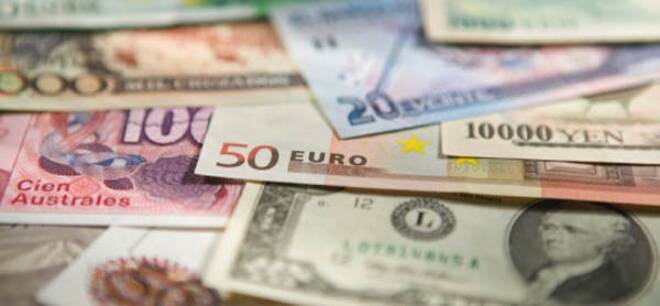Advertisement
Advertisement
Geopolitical, Domestic Events Drive Higher-Risk Currencies Sharply Lower
By:
The New Zealand Dollar closed sharply lower against the U.S. Dollar last week after the Reserve Bank unexpectedly committed to keep interest rates at record lows through to 2020 on disappointing economic activity. The Reserve Bank of Australia wasn’t as dovish as the RBNZ, nonetheless, the Australian Dollar weakened as the central bank showed no intention of raising rates over the near future. The Dollar/Yen was under pressure last week on trade tensions and on revelations the Bank of Japan is under pressure to move away from its accommodative policy. Geopolitical tensions in Turkey drove the Lira sharply lower, causing investors to dump higher-yielding currencies like the Euro, Australian and New Zealand Dollars. Money then flowed into the safe-haven U.S. Dollar and Japanese Yen.
Geopolitical and domestic events drove most major currencies lower last week with the exception of the Japanese Yen which posted a modest gain.
New Zealand Dollar
The New Zealand Dollar closed sharply lower against the U.S. Dollar last week after the Reserve Bank unexpectedly committed to keep interest rates at record lows through to 2020 on disappointing economic activity. The dovish news caught investors off-guard, fueling a massive sell-off in the currency.
The NZD/USD settled at .6577, down 0.0171 or -2.53%.
The Reserve Bank of New Zealand kept its official cash rate on hold at 1.75 percent in a widely expected move. It also downgraded its forecasts for 2019 gross domestic product growth to 2.6 percent from 3.1 percent.
The RBNZ sees the cash rate steady for much longer than earlier forecast, signaling stable rates until late 2020. Back in May, the central bank had projected rates at 2.0 percent by March 2020.
Australian Dollar
The Reserve Bank of Australia wasn’t as dovish as the RBNZ, nonetheless, the Australian Dollar weakened as the central bank showed no intention of raising rates over the near future.
The AUD/USD settled at .7295, down 0.0102 or -1.38%.
Last week, the RBA ended its August monetary policy meeting by holding rates at a record low of 1.50 percent, marking two whole years with no move in interest rates, the longest policy pause in its modern history.
“Further progress in reducing unemployment and having inflation return to target is expected, although this progress is likely to be gradual,” RBA Governor Philip Lowe said in a statement, reiterating his previous outlook.
Late in the week, the RBA issued an upbeat monetary policy report, with policymakers continuing to project that “above trend” economic growth will drive the unemployment rate lower, and wages higher, thereby pushing consumer price inflation higher over coming years.
Despite the upbeat report, investors felt the projected increase in inflation is still insufficient for markets to boost expectations for an Australian interest rate rise before late 2019.
Japanese Yen
The Dollar/Yen was under pressure last week on trade tensions and on revelations the Bank of Japan is under pressure to move away from its accommodative policy.
The USD/JPY settled at 110.933, down 0.340 or -0.31%.
A summary of opinions from the July 30-31 BOJ board meeting released on Wednesday showed that one member wanted to allow long-term yields to move in an even wider band than the range indicated by the central bank.
Geopolitical Tensions and Safe-Haven Buying
Geopolitical tensions in Turkey drove the Lira sharply lower, causing investors to dump higher-yielding currencies like the Euro, Australian and New Zealand Dollars. Money then flowed into the safe-haven U.S. Dollar and Japanese Yen.
The Euro in particular was crushed to its lowest level against the U.S. Dollar in more than a year as a plunging Turkish Lira sparked broad risk aversion, with investors worried about a contagion effect on European banks. Turkey’s Lira plummeted as much as 18 percent on Friday as worries about President Tayyip Erdogan’s influence over monetary policy and worsening U.S. relations snowballed into a market panic.
The Russian Rouble also retreated to its lowest level since November 2016, weakening beyond the psychologically important 65 per dollar threshold, after the Trump administration said it would impose fresh sanctions on Moscow.
About the Author
James Hyerczykauthor
James Hyerczyk is a U.S. based seasoned technical analyst and educator with over 40 years of experience in market analysis and trading, specializing in chart patterns and price movement. He is the author of two books on technical analysis and has a background in both futures and stock markets.
Advertisement
